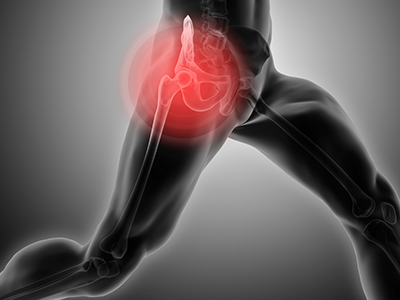Physiotherapy For Hip and Knee Osteoarthritis Pain

Osteoarthritis affects almost 10% of all Australians. As we age, the rate of osteoarthritis increases to the point where over 60% of people over 55 years of age will have this condition to some degree. The number of people affected is projected to increase significantly the combination of an ageing population, a more sedentary lifestyle and higher obesity rates.
Osteoarthritis can significantly impact your
life because it is most commonly seen in weight bearing joints such as the
knees and hips. Pain in these joints often causes people to either reduce their
activity or stop exercise altogether, which only makes the problem worse. Physically,
this results in an accelerated deconditioning process which weakens muscles
(especially the quads, glutes, hamstrings and calf) and causes more joint pain
and stiffness. Often this inactivity also causes people to gain weight, which
is an increases joint pressure and makes things worse. Importantly, we also see
a restriction in activity participation, community engagement and a reduction
in quality of life.
Morning stiffness is often an early symptom
of osteoarthritis, usually resolving within about 30 minutes of getting moving.
Other common symptoms are painful and restricted joint movements, having a
gritty feeling within the joint during movement which may or may not be noisy,
and some people with knee osteoarthritis show swelling and visible changes in
joint alignment. Because pain and restriction change your joint mechanics and
cause weakness they also increase your risk of further pain and joint
degeneration, so it’s important to get your knee assessed and treated properly,
particularly focusing on rebuilding your full strength and control.
Physiotherapy is the first-line treatment
for knee and hip joint osteoarthritis. Research clearly shows that effective physio
management, including manual therapy and a comprehensive strength program,
provides great outcomes for people with osteoarthritis. It is important that
treatment starts as early as possible to maintain your strength, reduce joint
degeneration, minimise changes in joint mechanics and keep you as active as
possible.
Your Initial Physiotherapy Assessment
In your initial assessment a detailed
history and physical assessment is completed to clarify your diagnosis. This
includes an examination to identify painful or restricted movements and a
thorough strength assessment to identify any weakness that may be contributing
to your pain. Your physio will also spend time talking to you about your goals
for leisure, sport and exercise.
During your assessment your physiotherapist
will clearly explain your results and work with you to build a plan that is
targeted towards your specific goals. This can be as simple as reducing pain
and restoring function for normal daily activities, or more high-performance
goals such as returning to sport. and
How Can Physio Treat Hip And Knee Osteoarthritis?
Your treatment is tailored specifically for
you and is based on your goals for your lifestyle and exercise activities, the exact
nature and extent of your symptoms, plus any relevant history or other injuries.
Your physiotherapist will choose the most effective combination of proven and
effective treatment techniques for you, often including;
- Education – Your
physiotherapist will explain osteoarthritis in plain language to ensure that
you fully understand what it is and how to modify any contributing factors.
They will also describe what your rehab process will look like moving forward.
This includes advice on activity modification for pain relief during your
normal daily activities. Education is is an important part of treatment, so you
are also given plenty of time to ask any questions that you may have.
- Hands-on or manual therapy
– hands-on techniques can be very effective in the early stages of treating osteoarthritis.
Manual therapy focuses on reducing pain and swelling plus restoring your full
range of movement. This is especially important in the beginning of treatment
as it will enable you to start exercising as soon as possible, which is the
gold standard for osteoarthritis management.
- Structured Exercises – muscles
surrounding the hips and knees are commonly tight and weak as a result of pain-related
inactivity, particularly the quadriceps, hamstring, calf and gluteal muscles. Your
physiotherapist will tailor a progressive exercise program for you that
transitions from stretching and mobility to specific strengthening and then more
whole-body exercises. If you have specific goals for sport or fitness then your
exercise program will work towards achieving them. It is important to note that
weakness in the knee and hip muscles can also increase your risk of other
injuries, because muscle weakness leads to poor knee and hip mechanics and
abnormal loading of other joints. Therefore, an effective strength program not
only helps resolve your current pain but also reduces your risk of future
injuries.
All of our physiotherapists at Central
Performance are experienced in treating osteoarthritis. As exercise is key in osteoarthritis
management, your physiotherapist may also recommend that you see an exercise physiologist
as part of your treatment plan. This will help you establish an effective ongoing exercise program tailored towards successful long-term
management of your osteoarthritis.


